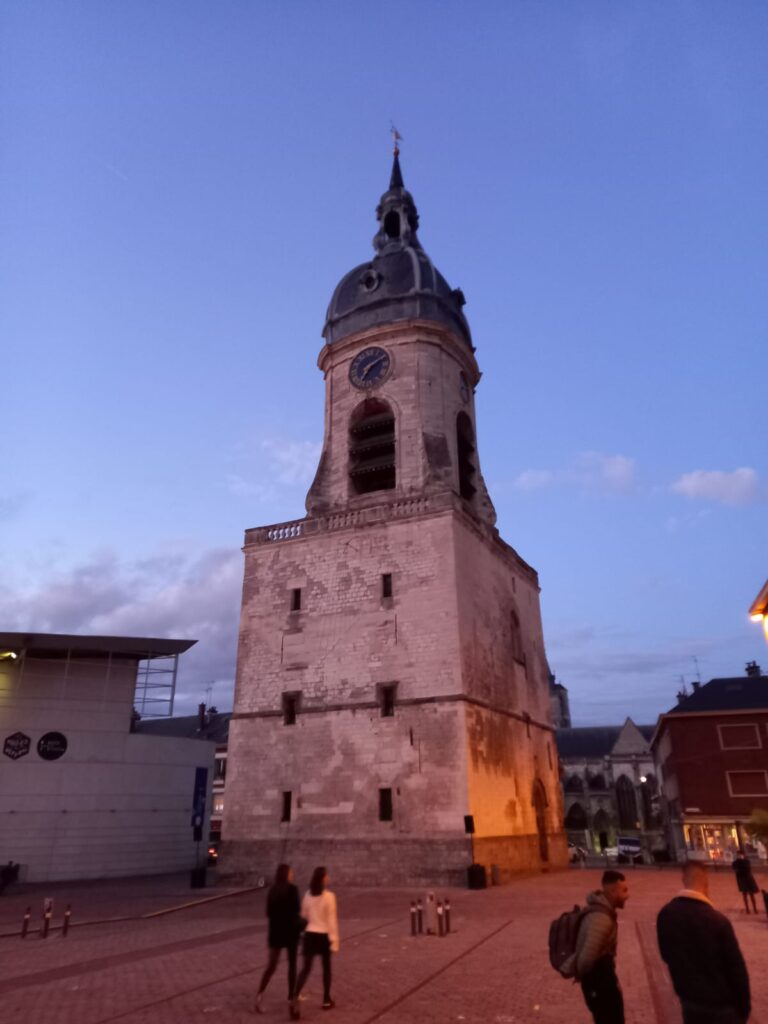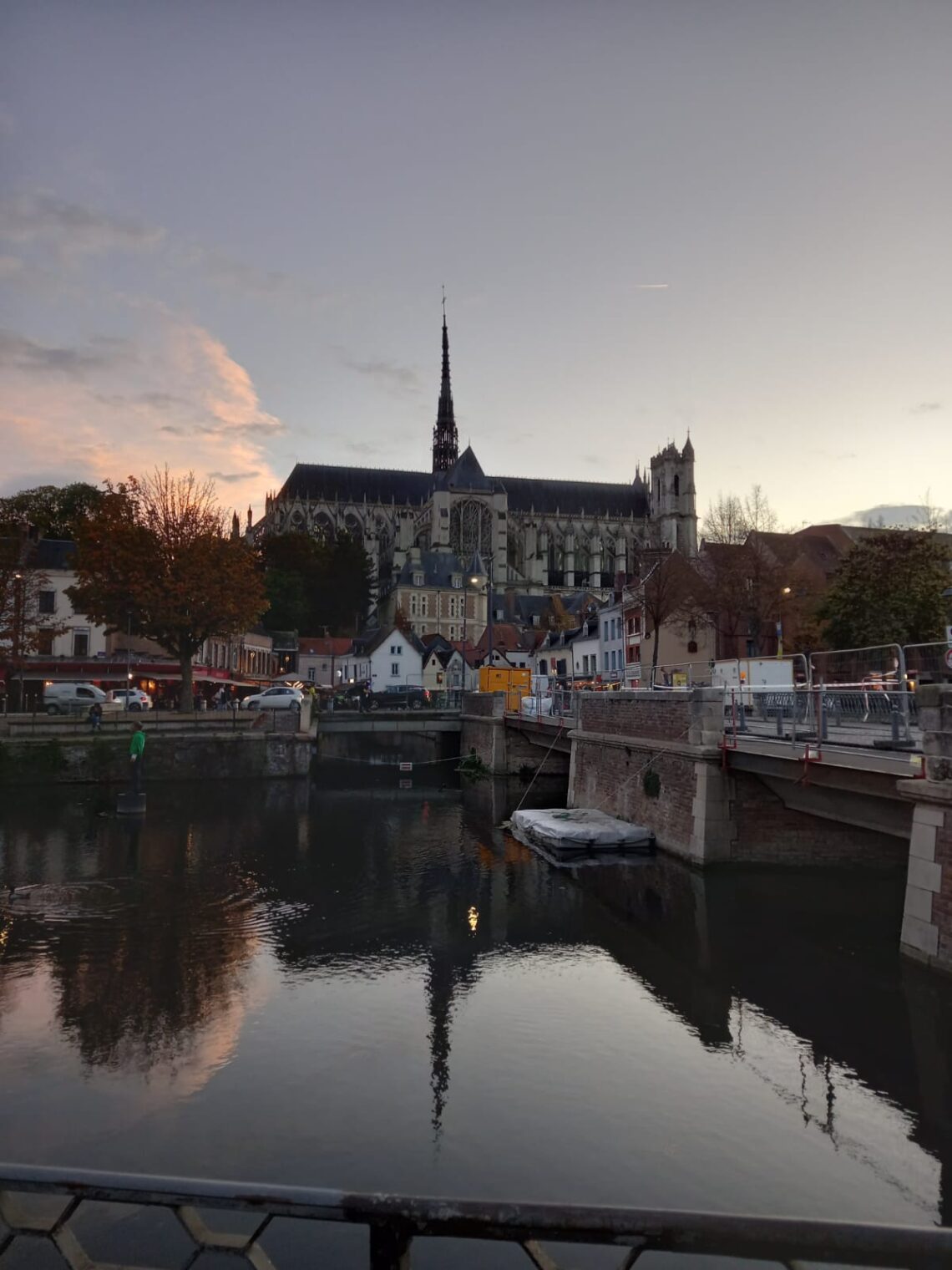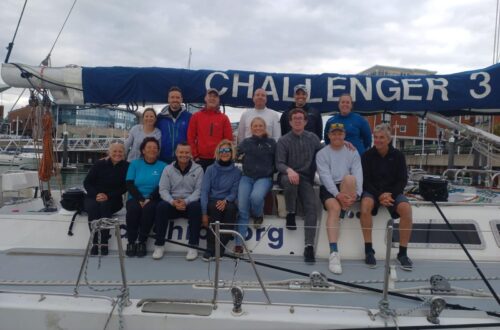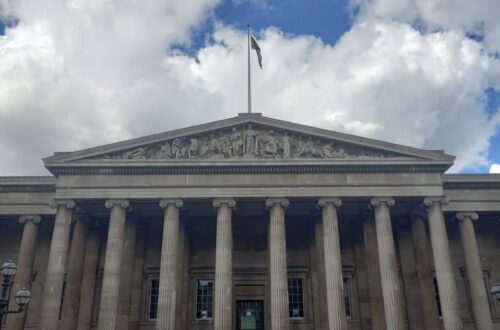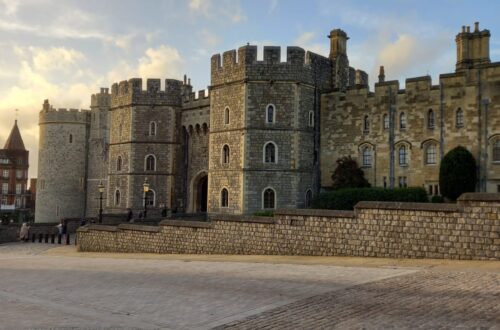I dedicate this article to a special place for me. The city of Amiens is where I come from. My childhood memories, family memories and where my story began. Amiens is located right in the middle of the Hauts de France Region. In a 2h drive radius from Calais coming from England, Belgium and Paris. Amiens is famous for WWI history but not just that. Amiens has an middle ages history and its famous Cathedral is the emblem that represents the city. The Somme River flows in the middle of what’s remaining of the old town as the WWII bombardments wiped out the City centre. The Somme River splits in different canals throughout the historic old town called St Leu Quarter. Amiens’s nickname is the little Venice of the north of France. Let’s dive into the exploration!
The Notre Dame Cathedral of Amiens
The Cathedral of Amiens is the main structure and the main landmark of the City of Amiens. It’s right in the City centre. The Amiens Cathedral is the largest Cathedral in France and one of the largest in Europe. It’s twice larger than Notre Dame of Paris! The Cathedral is an example of gothic arts that inspired many other places. The Cathedral is an UNESCO World heritage site since 1981. It’s originally a place of pilgrimage as the Cathedral houses the so called St John The Baptist’s skull. The skull allegedly bought in Constantinople (Istanbul, Türkiye) during the crusades and ended up in Amiens in 1206. 2 other places claim to house the St John’s The Baptist’s skull like The Umayyad Mosque in Damascus (Syria) and the Church of San Silvestro in Rome (Italy).
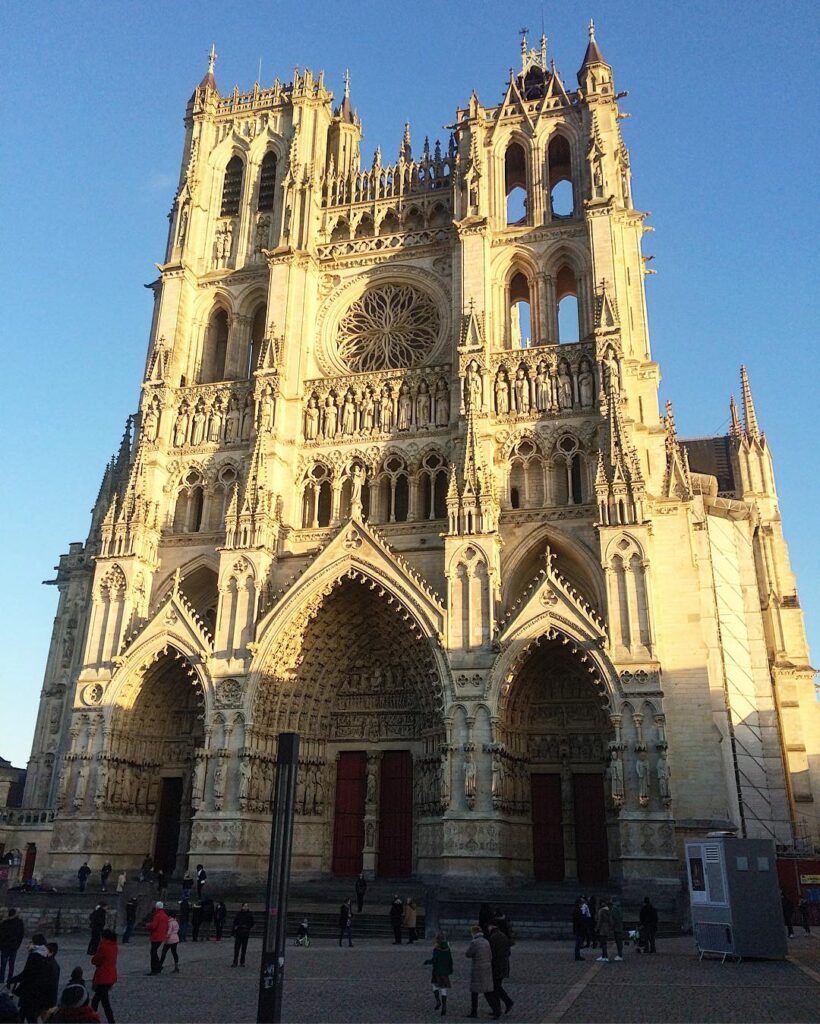
The earlier Cathedral
A Romanesque Cathedral which later hosted the St John The Baptist’s relics was erected. According to documents, earlier Churches have existed on site. But there’s no archaeological evidences. King Phillip II married there in 1193. A fire destroyed the Cathedral in 1218. Therefore in 1220 architect Robert de Luzarches to build a larger and most spacious Cathedral. In order to host more pilgrims as people deemed the old Cathedral too small.
The present Cathedral
The Cathedral we have today is an example of masterpiece. The construction starts in 1220 to complete the nave in 1236, which was short middle ages times. Although most of the building is complete in 1270 the architects succeed each other. From Robert de Luzarches, to Thomas de Cormont and his son Renaud de Cormont until 1288. But the 2 towers including the facades are complete in the 13th and 14th Centuries. Some other additions and modification took place. Like the organ, the rose and a new 112 meters spire. The original one burned down due to a lightning strike.
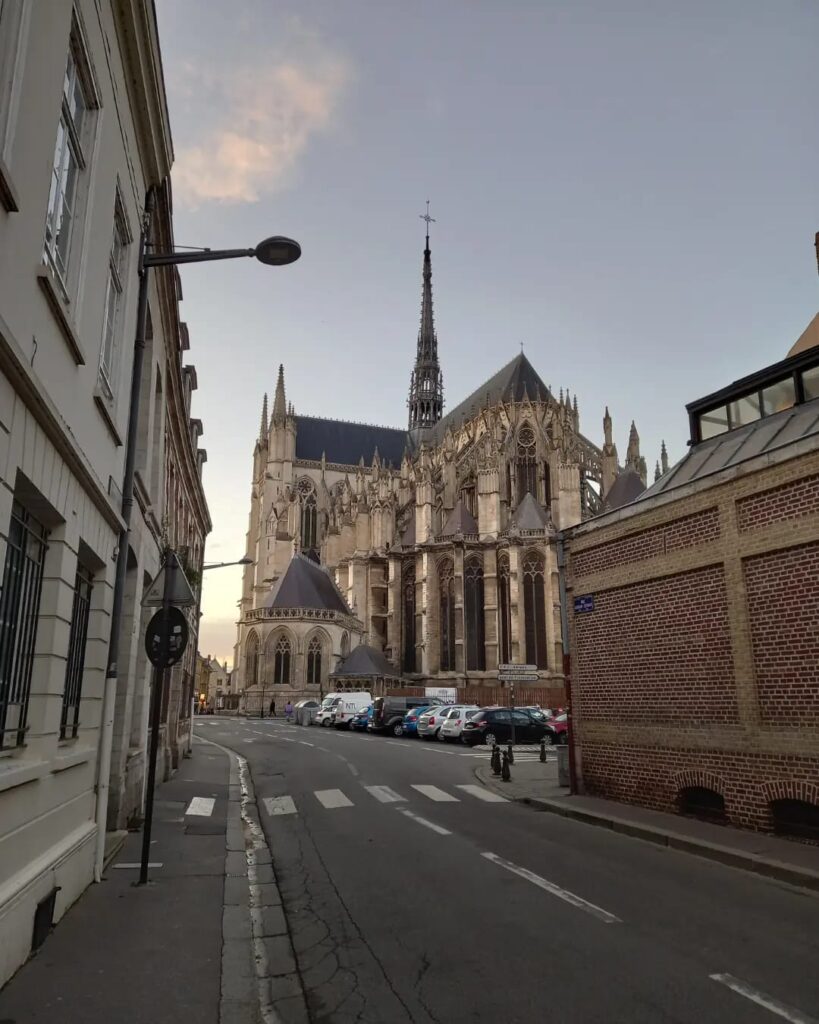
Towards the end of the 15th Century the Cathedral started crumbling, especially at the triforium. As cracks formed on the walls. In 1498 architect Pierre Tarisel decides to install a iron bar chain to buckle the structure. Like many other Cathedrals in France, the Amiens Cathedral suffered damages and smashed statues and looting. The Amiens Cathedral turned back into the Christian cult in 1800.
The 19th Century restauration
After degradations through the time, the Amiens Cathedral needed a large scale restauration. Famous architect Eugene Viollet-Le Duc is in charge of the restauration project from 1849 to 1874. In the mean time Viollet-Le Duc restored the Notre Dame de Paris Cathedral. The Amiens Cathedral’s spire design inspire him to design the Notre Dame de Paris. The Notre Dame de Paris spire now in perfectly identical reproduction after the fire. It’s the Amiens Cathedral’s spire design which inspired Viollet-Le-Duc do design the Paris one.
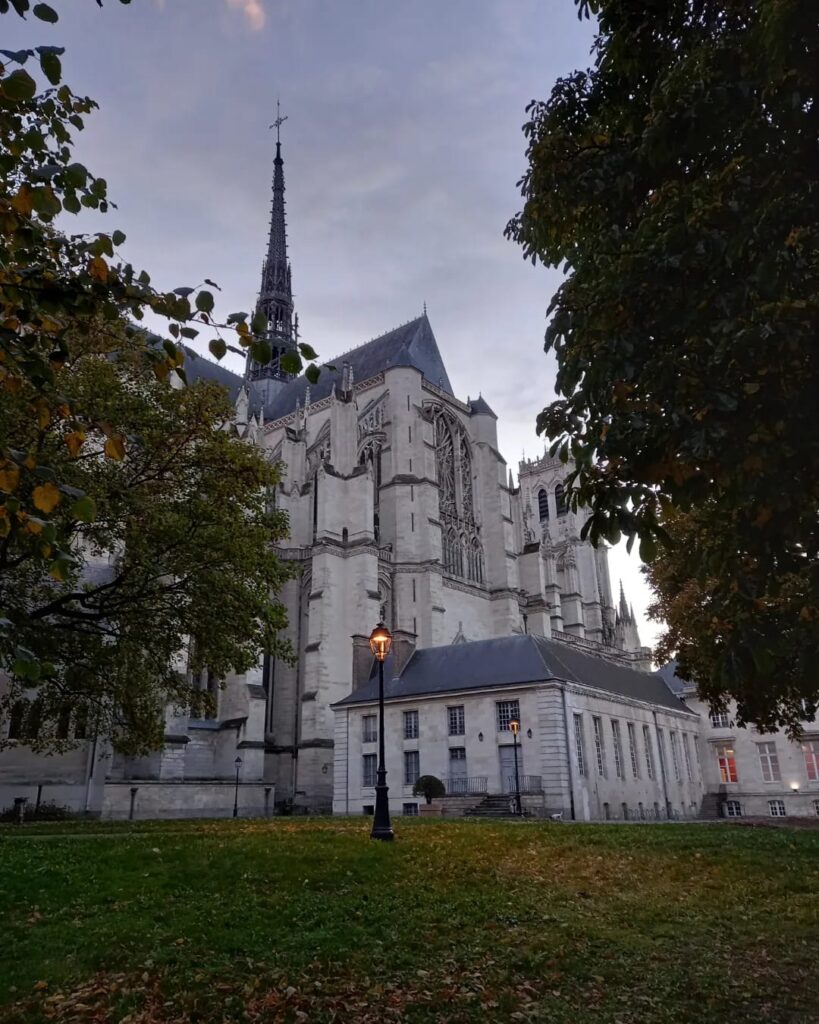
WWI and WWII
During wartimes sandbags protected the Cathedral, the same as used in the trenches. The Cathedral suffered from minor damage. During WWI the Bishop of Amiens urged the Pope Benedict XV to take action to safeguard the Cathedral. The Pope obtained from the the German government through the nuncio of Munich (future Pope Pius XII) the protection of the Amiens Cathedral. When WWII broke out, once again sand bags reappeared to protect the entrance gates and parts of the façade. The German army bombed most of the city centre. The bombed spared the Amiens Cathedral miraculously. Some people say the Cathedral was under protection by the pope. While a local legend claims Germans soldiers noticed the tilling formed Nazi cross inside the Amiens Cathedral. Some others just says it’s a miracle the Cathedral is still standing despite the bombardments.
Chroma Light show
In the 90’s, the Cathedral underwent a cleaning of the façade as well as the side wings. Through the time since the industrial revolution the stones and statues blackened due to the pollution. They processed the cleaning with lasers and they found evidences of paintings. So they developed a lighting technique to recreate the 13th Century colours. The light show gives life to the façade and to the statues. The show takes place in the Summer and Christmas period. It’s been taking place since more than 20 years and the show is still popular today.
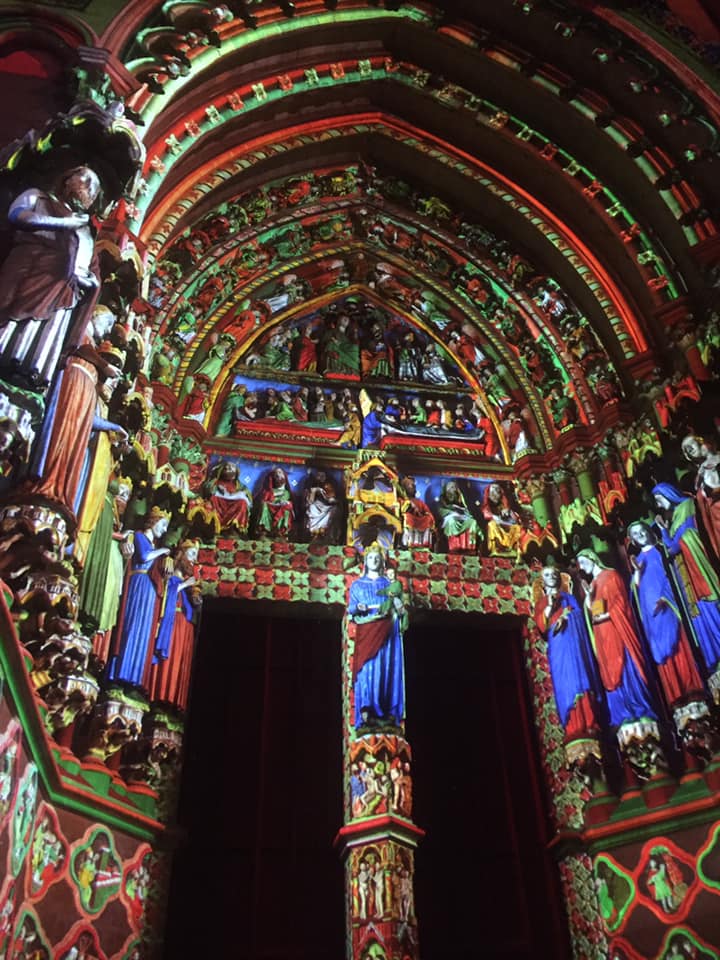
St-Leu Quarter
Located near the Amiens Cathedral and the University Picardy Jules Verne, St-Leu Quarter is the historic heart of Amiens. It’s the old town area that still remain today. St Leu is the place to hang out with friends, having food, drink and strolling. St-Leu has the oldest houses of Amiens situated at Place du Don which is the major spot. It’s the most beautiful area of Amiens. The area resembles to Venice because of the different canals flowing across the area. The 15th Century St Leu Church is part of the scenery as well. In the 19th Century, St Leu was a market gardening hub. Market gardeners from the Hortillonages (which I’ll talk about later) carried their commodities to sell them on the quays of the river Somme. The Picardy region is famous for Beetroots ang Potatoes farming. The traditional market on the water revives every year on June.
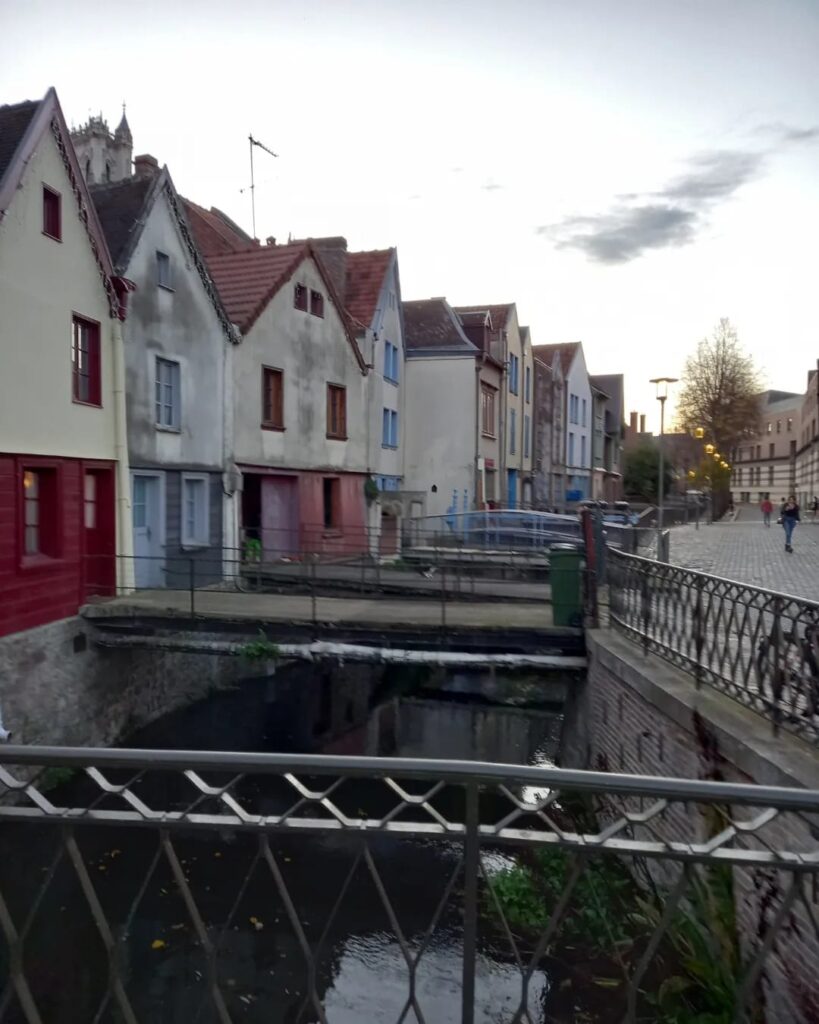
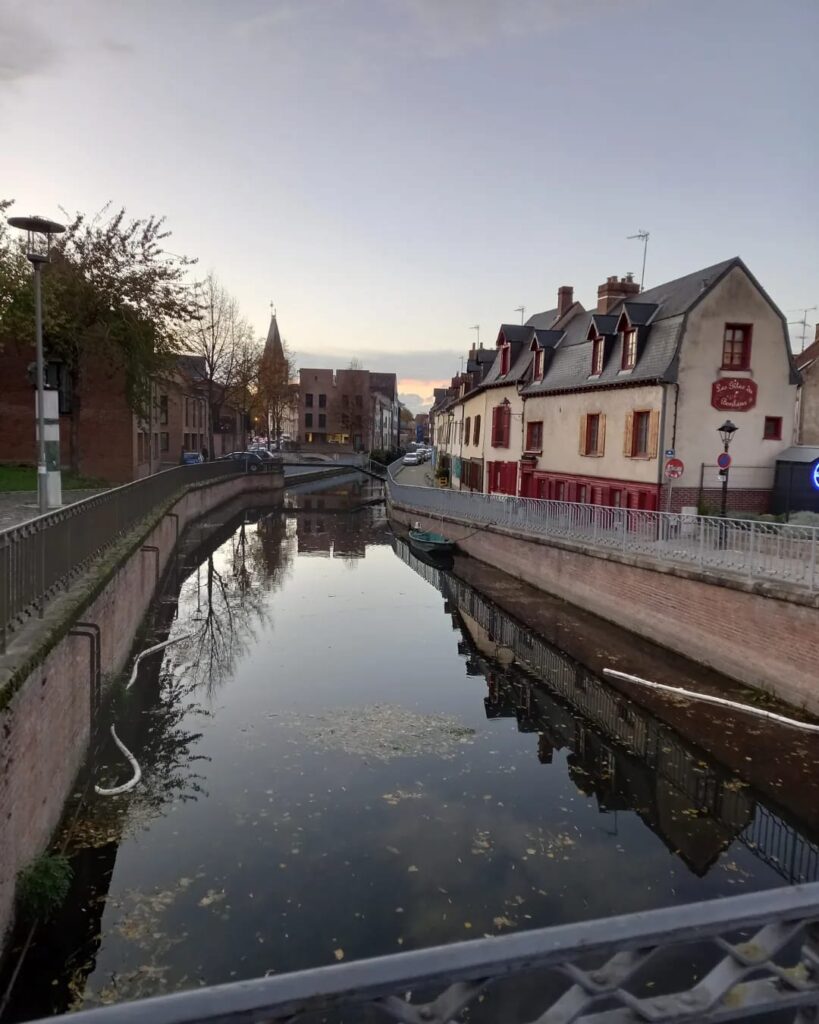
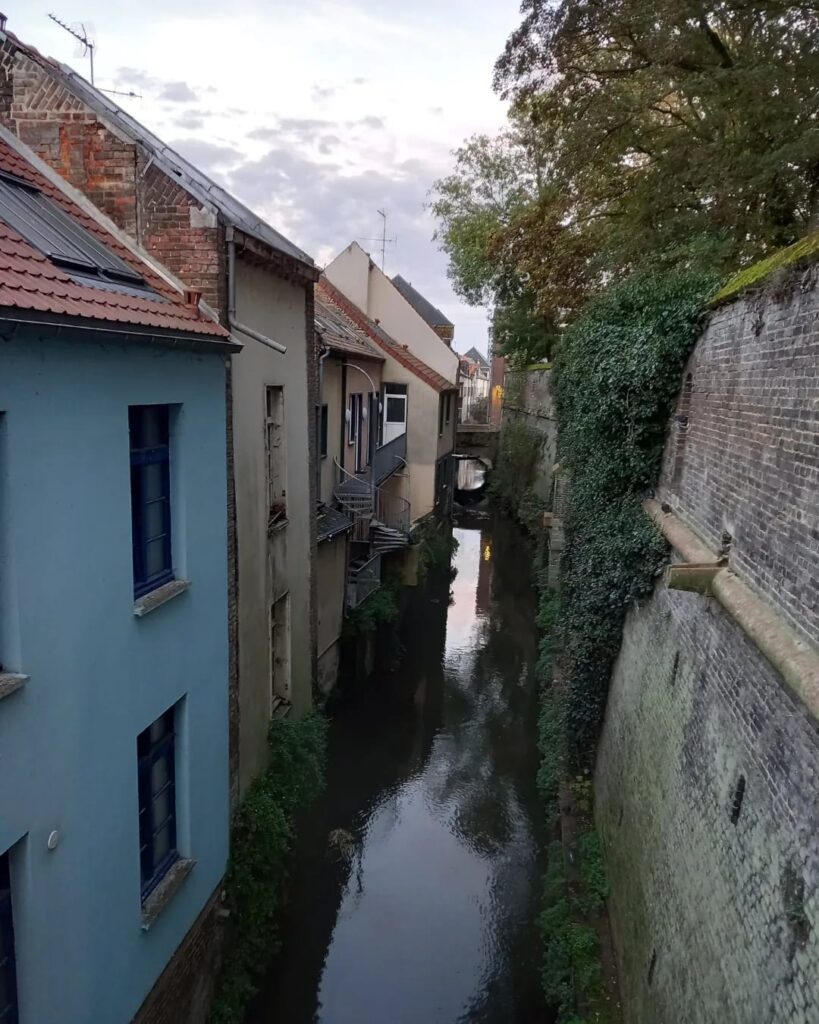
St Pierre Park
St Pierre Park is the main and largest Park of Amiens. Created in 1993, St Pierre Park used to be an area for fishermen and campers. The Park becomes attractive during hot Sunny days with multiple activities like Paddle boat, Tennis, Basket ball and Football. There’s a stunning view of the Cathedral and the Perret Tower (Which I’ll talk about later). Going there was for me going on holiday, while enjoying ice-creams and walking on the pondside. There are several water streams where I dipped my feet as a child.
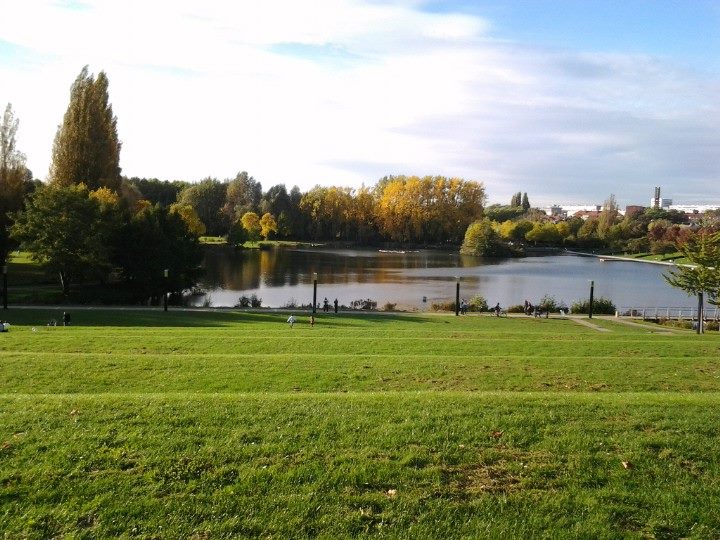
The Hortillonages
5 minutes walk from St Leu Quarter, The Hortillonages is a mosaic of cultivated gardens islets in the middles of canals which is unique of its kind. Hortillonages comes from “Hortus” which means gardens. The Hortillonages have been there since the Roman period. Hortillons is the name of the gardeners since back then. The maze of islands is accessible by small boat trip only. There are still 10 market gardeners who sell their produces at the annual market in St Leu. Tourists can spend nights in cottages in the middle of the greenery. The gardens are peaceful as we think we’re far from everything but we’re at 5 minutes from the city centre.
The city centre
Amiens city centre is the trendiest and busiest part of Amiens. Many restaurants, shops and venues. The very centre is Gambetta square. Gambetta square is the main spot of the city centre with bars and restaurants around and for me I’ve always enjoy having strolls there since my childhood. A Roman Forum ounce stood on Gambetta square thousand years ago. Remnants are discovered during the pedestrianisation in the early 90’s which are visible today through portholes. Gambetta square is today a square with greenery where people meet each other, sit down, chill by the fountains. It’s also a place where often protests take place. Located at few metres between the Amiens Cathedral and the 18th Century City hall.
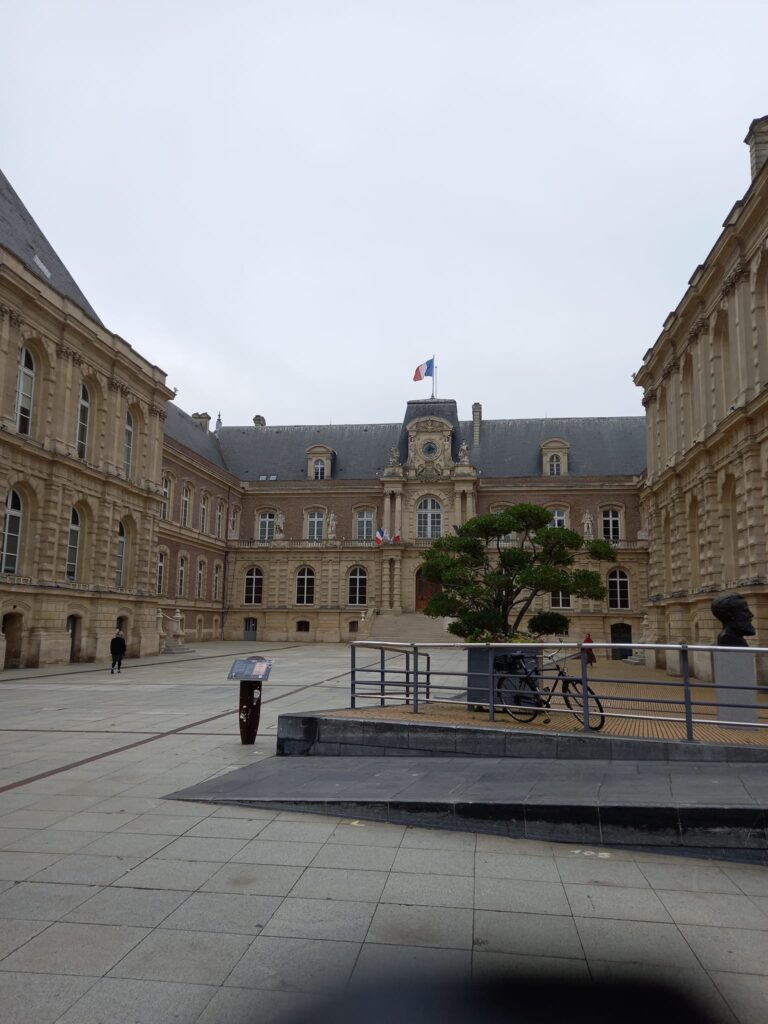
The Amiens City hall is a place of European history. At the time of Napoleon in 1802 at the end of the second coalition war, France, United Kingdom and Spain sign the Treaty of Amiens. The Treaty of Amiens marks the end of the French revolutionary wars. The treaty brought a temporary peace in Europe for 14 months.
The Perret Tower
Symbol of post-WWII reconstruction of Amiens, the Perret Tower is the unmissable skyscraper visible from many spots in the City. In 1942 Auguste Perret designs the Tower alongside the reconstruction of the Railway station. The works starts in 1950 to finish in 1952. Also the Tower is visible from the countryside, and was the highest residential skyscraper in France. In 2005 architect Thierry van de Wyngaert refurbishes it and add an illuminated glass cube called the hourglass of light.

The Belfry
The Belfry of Amiens is located in the City centre at the market square. It’s an UNESCO heritage site since 2005. Belfries are common in the landscape in Northern France and Belgium. Built in the 15th Century, the belfry symbolises the independence of the Town. It’s the place of meeting of notorious people of Amiens. Then it becomes an archives room to finally turn into a prison. Watchmen are on the top to watch the surroundings of Amiens to warn the population in case of arrival of enemies. Unlike the Cathedral, the Belfry suffers from heavy damage during WWII. The Bell tower is until its restauration in the late and early 90’s abandoned. The chimes sounds at different time of the day and we can hear it while walking nearby.
